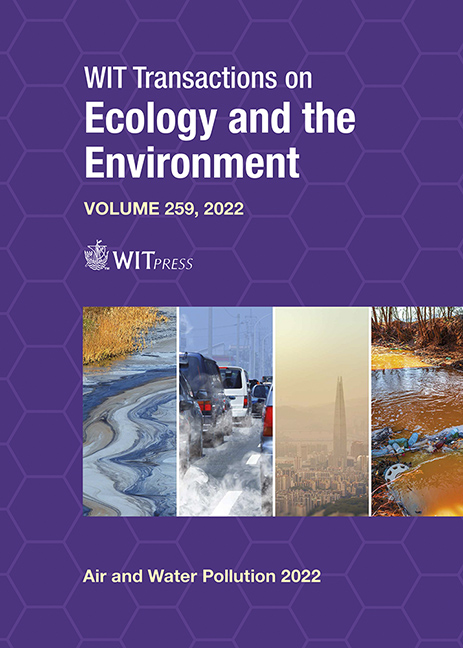USE OF SATELLITE IMAGES TO ESTIMATE URBAN HEAT MAPS
Price
Free (open access)
Transaction
Volume
259
Pages
13
Page Range
37 - 49
Published
2022
Paper DOI
10.2495/AWP220041
Copyright
Author(s)
ANA GABRIELA FERNÁNDEZ-GARZA, ERIC GIELEN, JOSÉ-SERGIO PALENCIA-JIMÉNEZ
Abstract
There is plenty of evidence about the change in the magnitude of climatic conditions in cities all over the world. It is an important problem especially since a large part of the world’s population resides in cities. Comprehending the behaviour of Urban Heat Island (UHI) is necessary to plan cities that offset the climate change effects and offer greater security and quality of life to its inhabitants. In this way, planners need tools to model the UHI and research how cities interact with it. This paper aims to develop a methodological proposal to characterize UHIs in cities by using image data from the ASTER (Advanced Space Thermal Emissions and Radiometric Refection) satellite sensor. The case study is in the city of Valencia in Spain. It is based on data from three moments, for which day and night information are available for an identical ambit. The results provide six maps of the city of Valencia in a period of 4 years: a day and night one for 25 March 2017, 19 August 2018, and 7 May 2021. Hot and cool spots were detected in the city and the shape of the UHI was characterized. A few indicators were calculated to analyse them and study their evolution over time. Finally, we conclude that the use of image data from ASTER satellite offers a powerful infrastructure, easy and cheap to use, to model UHIs in cities. This methodology can be reproduced in many cities, as ASTER images are available for a large list of countries. This experience can be a useful tool in further study to obtain better knowledge about the relation between urban morphology and UHIs, so plan better cities.
Keywords
heat maps, urban form, Valencia, ASTER, Urban Heat Islands




